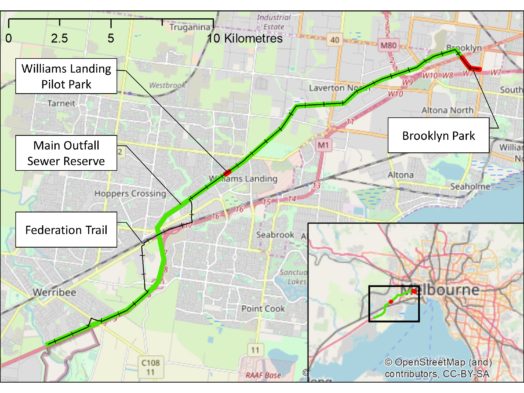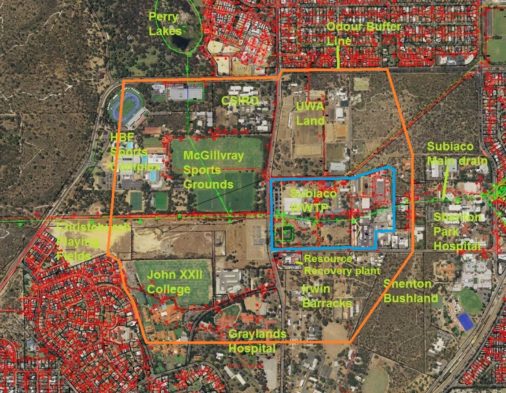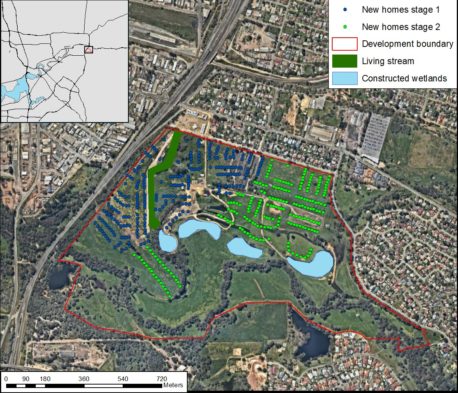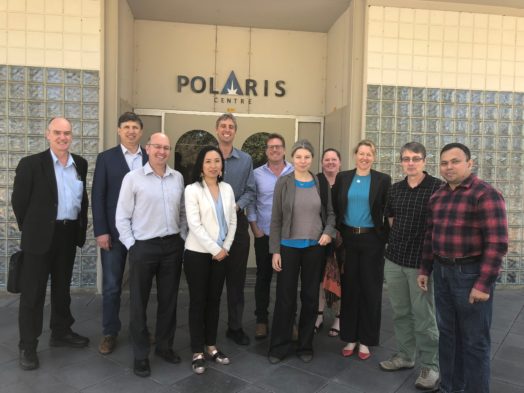Economic evaluation case studies (IRP2-WP5)
Overview
This work package is undertaking five case studies to test the integrated economic evaluation framework. In each case study, we will:
- Understand the issue or problem and knowledge gap analysis by collecting and reviewing relevant information (such as benefits, costs, timeframe, major stakeholders, regulatory framework, current business model, etc.);
- Assess the potential of benefit transfer to use existing data. If required, conduct original studies to estimate non-market values, collect cost data from agencies and workshop economic analysis methods and data requirement with relevant stakeholders;
- Conduct economic evaluation (benefit-cost analysis) of several alternatives or options, and;
- Engage with end users to understand the feasibility of implementing various options and generate a set of recommendations for the implementing organisations.
Greening the Pipeline (GTP) is a flagship livability improvement project for Melbourne Water in partnership with Wyndham City Council, City West Water, and Vic Roads. This Case study has aimed to assess community attitudes towards the improvement of Main Outfall Sewer (MOS) reserve. Two distinct non-market valuation techniques were applied: a hedonic price analysis and a choice experiment survey.
Hedonic price analysis: Brooklyn Federation Trail Park, a four-hectare public open space created in 2012. The hedonic price analysis is being conducted to understand whether the implementation of a parkland improvement project resulted in an uplift in the prices of adjacent residential properties. The data were collected from the commercial provider, and the analysis is near completion.
Choice experiment survey: A choice experiment survey was conducted with residents who live within five kilometres of the MOS. People’s responses to a series of hypothetical parkland development scenarios were collected and analysed to understand people’s willingness to pay for the construction or improvement of the following features: vegetation, general park facilities, paths and tracks, exercise facilities, rainwater management and local crossing. Initial analysis suggests that the residents have a positive willingness to pay for these improvements.
Results were presented to the project partners, and a case study report has been published for members and partners to access. An Industry Note is available to download and share widely to aid in communicating the research outcomes. Melbourne Water has released an infographic promoting the results.
For further questions or to obtain a copy of the report, please contact Dr Sayed Iftekhar
The Subiaco Case Study Project investigates non-residential demand for recycled wastewater from the Subiaco Wastewater Treatment Plant (WWTP), to explore the potential for the plant and surrounding buffer zone to transform into a Strategic Resource Precinct (SRP). The SRP concept is a land-use planning approach that re-imagines WWTPs as water resource recovery plants (WRRPs) generating valuable resources for nearby land users, as opposed to simply removing waste products. The establishment of SRPs could generate two important benefits for society. Firstly, expanded local re-use of WRRP products such as recycled water could be very valuable in the face of growing water supply challenges driven by climate change and population growth. Secondly, odour buffer zones in urban areas are coming under increasing pressure from residential in-fill developments. The establishment of SRPs could encourage prospective users of products like recycled water to preferentially locate in proximity to WRRPs, leading to the creation or retention of irrigated recreational green spaces offering high value to society, particularly non-market value.

The SRP concept has not yet been thoroughly tested in the field, a gap to which the Subiaco Case Study Project contributes. Operationalisation of the SRP concept as applied to water recycling requires an in-depth understanding of the relationship between land use and water use at a local level. Furthermore, it requires a robust understanding of what local demand actually exists for recycled water. High demand for recycled water in the geographical vicinity of a WWTP is likely to indicate the potential to use recycled water availability as a land-use lever, thereby moving towards the creation of an SRP. Conversely, low demand for recycled water suggests that attempting to use recycled water availability to leverage local land use is likely to be ineffective. Finally, it is important to understand how future water availability scenarios might affect local demand for recycled water, and through that to explore how the value and function of an SRP could change over time.
Therefore, the four major objectives of the Subiaco Case Study Project are as follows:
- To investigate current and future non-residential land use in the suburbs surrounding Subiaco WWTP’s potential SRP to better understand the relationship between land use and water availability
- To investigate current and future non-residential water use in the suburbs surrounding Subiaco WWTP’s potential SRP to identify potential opportunities for recycled water to substitute for other water sources
- To estimate current willingness-to-pay for recycled water for non-residential use in the suburbs surrounding Subiaco WWTP’s potential SRP
- To explore future demand for recycled water for non-residential use in the suburbs surrounding Subiaco WWTP’s potential SRP under three different groundwater allocation reduction scenarios
To meet these objectives we have conducted a mixed quantitative/qualitative survey of existing and potential recycled water users located in or near the buffer zone surrounding the Subiaco WWTP. This survey collected information about current and projected future land and water use, and assessed willingness-to-pay for recycled water on a per kilolitre basis both currently, and under different groundwater allocation reduction scenarios. This information permits an assessment of the extent to which recycled water could contribute to establishing an SRP at the Subiaco WWTP.
Key collaborators are the Western Australian Water Corporation, and the Department of Water and Environmental Regulation.
The Subiaco Case Study project was awarded the 2019 Conference Best Poster Award (Committee Choice) at the 63rd Annual Conference of the Australasian Agricultural and Resource Economics Society in Melbourne, February 2019. See Poster.
Publications:
Ideas for Subiaco Strategic Resource Precinct
Subiaco Strategic Resource Precinct Case Study: Non-Market Valuation of Recycled Water
Water sensitive urban designs, such as rain gardens, constructed wetlands, and living streams, provide multiple ecosystem services, like amenity, recreation and ecological improvements.
The benefits of these services are often not considered when making investment decisions due to a lack of monetised values for these services. As a result, intangible benefits are often ignored in the formal investment decision framework (Gunawardena et al., 2017).
The CRC for Water Sensitive Cities’ (CRCWSC) Integrated Research Project 2 (IRP2) aims to identify and quantify these intangible benefits and produce accepted and well-aligned tools that can be used to inform decision making at multiple levels in public and private sector organisations. One of the key deliverables of IRP2 is to develop and test benefit transfer methods which would allow transferring of exiting nonmarket value information from one location to another. Benefit transfer methods are useful when decision makers face time and resource constraints as such methods allow extrapolation of existing nonmarket values to new contexts (Iftekhar et al., 2018).
This case study applied benefit transfer methods for a specific site, Belle View Estate, in Western Australia. Belle View Estate is a proposed residential development located in Bellevue, 16.5 km north-east of Perth. The water sensitive urban design (WSUD) technologies considered in this development are constructed wetlands and living stream.
Key collaborators of this case study are Eastern Metropolitan Regional Council (EMRC), Strategic Planning Institute P/L, Department of Biodiversity, Conservation and Attraction (DBCA) Water Corporation of Western Australia and Department of Water and Environmental Regulation (DWER).
The final report has been published and is available to partners, and a Case Study Industry Note is available to all to download and share.
When water authorities are faced with developing the servicing strategies for major urban infill and redevelopments, an opportunity exists to assess options outside of "business as usual". These options are principally related to exploring new ideas that enable an integrated solution to creating liveable, water sensitive outcomes. The Arden-Macaulay case study provides an opportunity to explore benefits associated with infill development, which can be transferable to other infill developments. This case study is employing choice experiments, and is being conducted within Case Study WP5.5.
Choice experiments: A choice experiment survey is under development to understand community views on different housing design options and what, if any, kind of housing designs people prefer. The survey will be carried out in Melbourne and Adelaide. The following design features will be tested: housing types, garage types, access to quality private space and access to quality communal space. Four focus group discussions have already been conducted in Melbourne and Adelaide.
This case study is in partnership with City West Water, Melbourne Water, City of Melbourne, City of Moonee Valley, Victorian Government (via Victorian Planning Authority), and other indirect stakeholders undertaking infill redevelopments.
Australia is one of the most urbanized countries in the world, and the pressure on Australian cities are growing due to population growth. The effect on the housing sector is prominent. The number of re-development projects within metropolitan areas is increasing, and the lot size is getting smaller. However, urban densification has a negative impact on the environment and natural water flow. It might be possible to reduce the impact on the natural environment by adopting water sensitive housing design options.
This case study is employing two non-market valuation methods: hedonic analysis and choice experiments.
Hedonic analysis: While developers implementing infill have to comply with local regulations, Local Councils may take additional steps to influence developers to achieve a better outcome. This may include improved connectivity to adjoining open space, advanced stormwater infrastructure, or specific dwelling design features. Such involvement of local councils in the planning of infills may result in higher value for residents. To test this we analyse prices of residential dwellings in urban infills in three local councils in the Adelaide Metropolitan Area. Local councils provided information about their involvement in infill development. House price data were obtained from a commercial provider. Preliminary results suggest that a high level of local council involvement in the infill development results in higher value for the residents. Dr Maksym Polyakov presented the preliminary results to the project partners, and has since delivered a recorded seminar to researchers, and designed a poster presentation for the AARES Conference, 2020.
Choice experiments: A choice experiment survey is under development to understand community views on different housing design options and what, if any, kind of housing designs people prefer. The survey will be carried out in Melbourne and Adelaide. The following design features will be tested: housing types, garage types, access to quality private space and access to quality communal space. Four focus group discussions have already been conducted in Melbourne and Adelaide.
Key collaborators of this case study are City of Salisbury, City of Port Adelaide Enfield, City of Onkaparinga, CRCWSC's IRP4 team members, Water Sensitive SA and other stakeholders.
